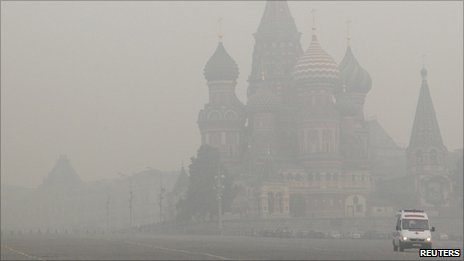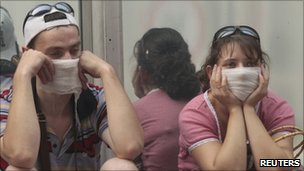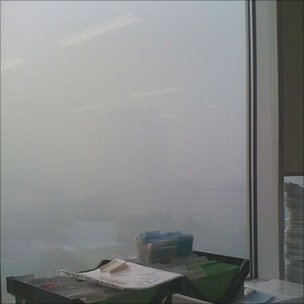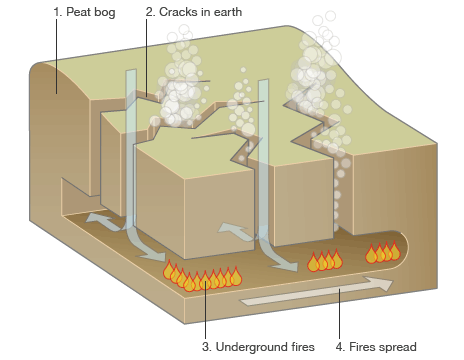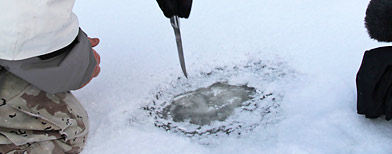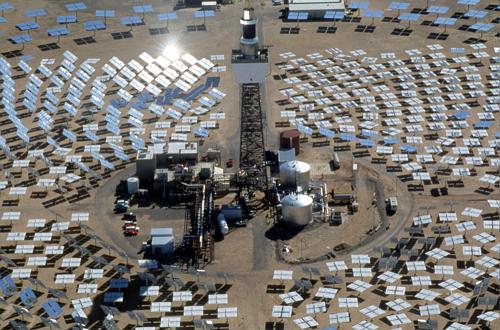<font size="5"><center>
How Arctic melting could benefit
shippers, oil companies</font size></center>
McClatchy Newspapers
By Renee Schoof
Friday, November 21, 2008
WASHINGTON — With global warming melting the Arctic's eons-old ice at an alarming rate, shipping and oil companies are looking ahead at how to exploit the new open waters.
For the past 30 years, the summer Arctic icepack has been shrinking. In 2007, the melt reached record levels. This past summer, the ice shrank to the second smallest area on record.
And while much of the discussions so far have been focused on dealing with global warming and on preserving habitat and protecting polar bears and walruses, another change is looming. When will commercial interests be able to develop the once-impregnable region?
Scientists say the Arctic's seas could be essentially free of ice in the summertime by mid-century.
"I'm convinced, based on models and observations, the trend is one of accelerated ice loss, and we're probably looking at a scenario, even with the best efforts to mitigate (global warming), that we'll continue to see loss," said Richard Spinrad, director of research for the National Oceanic and Atmospheric Administration.
Already, shipping already has increased within the Arctic Circle to serve the oil and gas industry.
The recent increase has been the result of a spike in commodity prices, not to capitalize on retreating sea ice, said Lawson Brigham, a former Coast Guard captain and climate scientist who made many voyages into the Arctic and around Antarctica.
The pull is strong in a world dependent on petroleum. In July, the U.S. Geological Survey issued the first public estimate of the petroleum resources north of the Arctic Circle. Its findings: 90 billion barrels of oil and 1,670 trillion cubic feet of natural gas.
Brigham is helping plan for the changes ahead as chairman of the Arctic Marine Shipping Assessment of the Arctic Council, an intergovernmental forum of eight Arctic nations.
"We don't profess to know exactly how industry will move ahead, but we know there's an increase of ships in the Arctic Ocean, and maybe that increase hasn't been matched by policy responses from safety and environmental standpoint, so that's what we're working on," he said.
Brigham was the captain of the icebreaker Polar Sea in 1994 when it teamed in a scientific expedition with Canada's Louis S. St. Laurent to make the first ocean-to-ocean surface voyage over the North Pole. "There was a lot more ice there than there is today," he said. "Quite an extraordinary difference in 14 years."
Except for some cruise ships and icebreakers, the traffic in the Arctic now is regional — mostly ships going in and out to provide transportation for the oil and gas industry, he said.
Oil companies have been looking at Alaska's arctic waters as a new frontier.
And in the past two years, the Bush administration has leased large parts of those waters — the Beaufort and Chukchi Seas.
Shell was the main buyer of the Chukchi leases in February, spending $2.1 billion.
"Shell, like many other national and international oil companies, is actively assessing Arctic opportunities," said Shell spokeswoman Darci Sinclair.
Conservation groups and Native communities challenged the Minerals Management Service's approval of a permit for Shell to drill exploratory wells in the Beaufort Sea. On Thursday, the U.S. Court of Appeals for the Ninth Circuit ruled that the MMS did not conduct the "hard look" at environmental impacts required by law and canceled the permit.
"We're very concerned about the aggressiveness the Bush administration has shown about oil and gas leasing in polar bear habitat," said Mike Daulton, the legislative director of the National Audubon Society.
Alaska's oil mostly is produced on land. The U.S. Minerals Management Service estimates Alaska's offshore waters hold 26.6 billion barrels of oil that are technically recoverable, and that nearly 90 percent of it is in the Arctic.
Shell wants to drill in open water during the summer and fall seasons.
"We can only conduct exploratory drilling in open water conditions because of the mobile nature of our drill rigs," Sinclair said. "From season to season, as we drill exploratory wells, those wells will be capped over the winter and revisited when the open water allows."
"In the event the project moves in to the development and production stages, we envision putting in place a permanent structure that can withstand moving sea ice," she said. "We have yet to decide what that structure would look like."
There's also competition. Russia has claimed a vast territory in the Arctic Ocean by declaring that the undersea Lomonosov Ridge is its continental shelf, setting up a dispute with the U.S., Canada and other Arctic nations.
The U.S., Russia and other nations agreed earlier this year to use the United Nations Convention of the Law of the Sea to sort out competing claims. The U.S. can't bring any claims, however, because the Senate hasn't ratified it.
Development hasn't proved easy so far for Russia's national energy company, Gazprom, in the Shtokman gas field near Murmansk, even in open water of the Barents Sea, said William Chandler, an energy expert at the Carnegie Endowment for International Peace.
"If there weren't almost insurmountable technical and financial challenges to get that stuff, why isn't it happening?" Chandler said.
Russia also has problems on land, where ice roads needed for development in the Western Siberian basin are melting earlier, leaving less time for exploration and development, Chandler said.
U.S. Navy Cmdr. Andrew Garlington, who works on maritime security policy, said the Navy is planning for increased use of the Arctic.
"But let me give you a caution," Garlington said. "When you hear ice-free waters in the Arctic, that doesn't mean it's free of all ice. That just means it's less than 10 percent coverage. It's still a very dangerous and dynamic environment up there."
The Coast Guard also is looking north and working with Canada and Russia on oil spill response plans.
The Northwest Passage between Baffin Bay and the Beaufort Sea was navigable for a period starting late last August, and also the year before. But Michael Storgaard, a spokesman for A.P. Moller-Maersk, the world's biggest shipping company, said it's shallow with many narrow straits, not fully mapped in detail and lacking large-scale rescue and repair facilities.
"For now, we do not see any immediate commercial possibilities in connection with the Northwest Passage," he said. "Our view is also that it will be some time, perhaps even decades, before we see a more consistent commercial utilization."
http://www.mcclatchydc.com/100/story/56317.html



